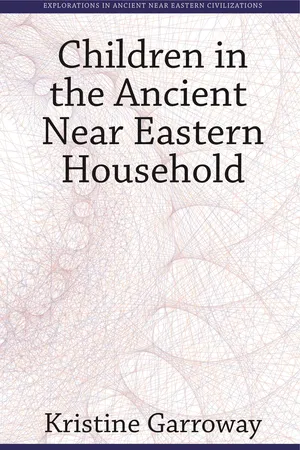
- 392 pages
- English
- PDF
- Available on iOS & Android
About This Book
Children were an important part of the ancient Near Eastern household. This idea seems straightforward, but it can be understood in many ways. On a basic level, children are necessary for the perpetuation of a household. On a deeper level, the definitions of child and member of the household are far from categorical. This book begins to explore the multiple definitions of child and the way the child fits within a household. It examines what membership in the household looks like for children and what factors contribute to it. A study addressing what a child is and how a child’s gender and social status affect her place in the household is vital to a proper understanding of the ancient Near Eastern household.
Despite their importance, children have long been marginalized in discussions of ancient societies. Only recently has this trend begun to change within biblical and ancient Near Eastern scholarship. A recent wave of studies, especially in relation to the Hebrew Bible, has started to address children in their own right. In light of the current state of scholarship on children, the purpose of this book is threefold. First, Garroway continues to fill out the picture of the child in the ancient Near East by compiling child-centric texts and archaeological realia. In analyzing these materials, she surveys the relationship between children and ancient Near Eastern society by examining the extent to which structuring forces in a community, such as social status and gender, contribute to the process of a child’s becoming a member of his household and society. Finally, this information provides a base for future research, for example, a cross-cultural study of children in the ancient Near East in Classical Antiquity.
Frequently asked questions
Information
Table of contents
- COVER Front
- Table of Contents
- Acknowledgments
- Introduction
- Chapter 1: Foundations: Theory and Childhood
- Chapter 2: Adoption
- Chapter 3: Orphans
- Chapter 4: Children as Debt-Slaves
- Chapter 5: The Slave and Hired Child
- Chapter 6: Children in Biblical Israel
- Chapter 7: Child Sacrifice
- Chapter 8: Child Burials: An Overview
- Chapter 9: Child Burials in Canaan
- Chapter 10: Conclusions
- Appendix A: Cuneiform Texts
- Appendix B: Archaeological Data for Burials in Canaan
- Appendix C: Catalog of Sites
- Glossary
- Bibliography
- Index of Authors
- Index of Scripture
- Index of Ancient Sources